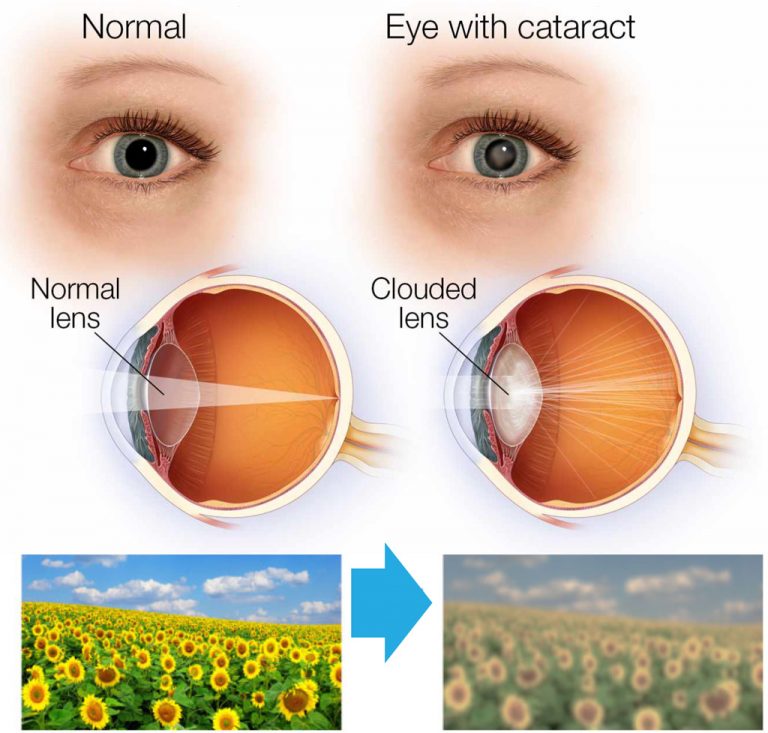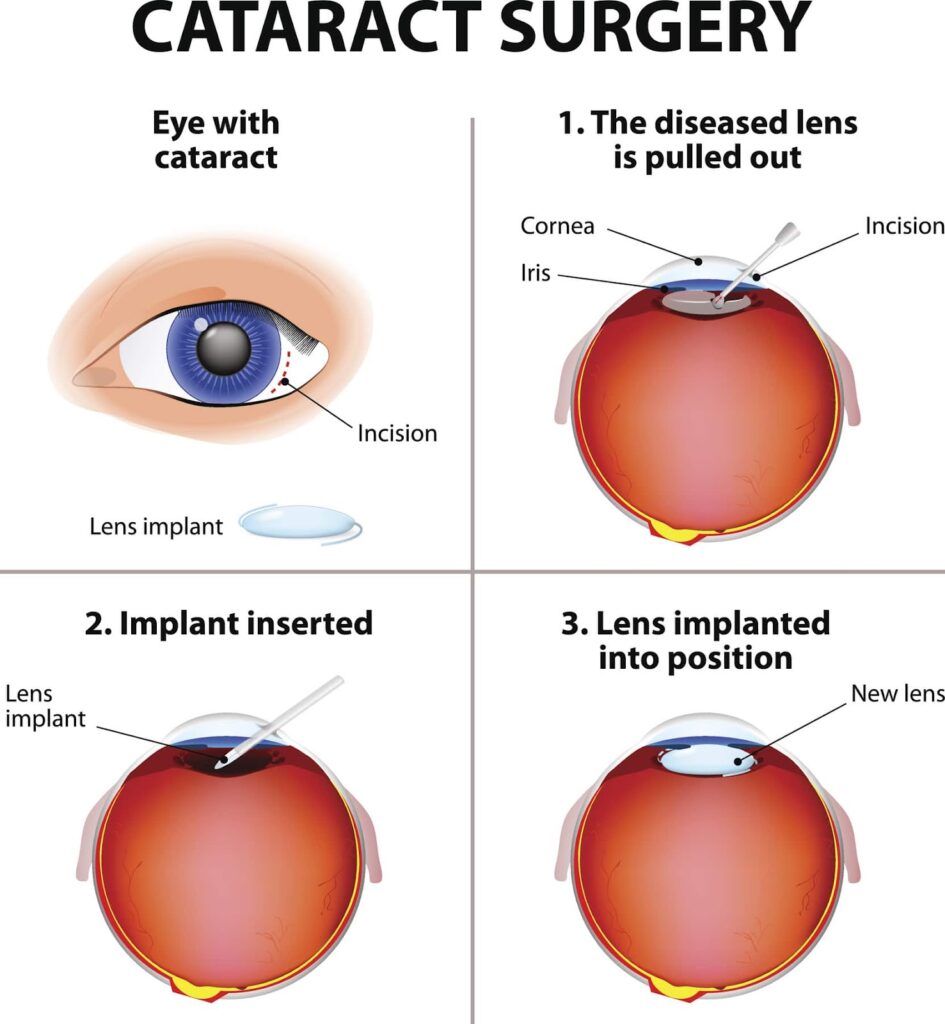Overview:-
“A cataract” surgery is a surgical procedure that partially removes the iris and lens of the eye and inserts an artificial lens. A cataract usually affects the “clear” lens, causing it to become cloudy. The causes of cataracts are complicated and the possible ways to treat these lenses are also varied.
A common eye procedure that is performed on an outpatient basis, is called cataract surgery. Best Cataract surgery in Ambikapur is quite common and is a generally safe procedure. Overall, cataract surgery is a common eye procedure usually done on an outpatient basis.
Why it’s done
The Best Cataract surgery in Ambikapur treats cataracts or cloudy lenses in the eye. They can hinder your vision, causing blurry vision and glare from light. If cataracts make these basic activities, such as reading, tiresome, a doctor may suggest you allow your cataract to form a blurry image, which is called cataract surgery.
In certain cases, cataract surgery may be recommended if a cataract interferes with the eye doctor’s ability to monitor or treat another eye condition, such as age-related macular degeneration or diabetic retinopathy, for example. An older patient with an eye problem may need an exam to make sure the problems are well controlled before mentioning surgery.
In most cases, patients waiting for cataract surgery do not hear any change in their vision. As a consequence of this, the patients would have enough time to consider their options. If there were any deterioration of vision, the surgery could be put back and postponed for many years if necessary.

Risks
Also, Complications after cataract surgery are uncommon. Nary many cases require hospitalization, so treating these cases is rarely challenging.
Inflammation, Injection, Infection Organ That Grows Bleeding Poor line, Dry eye Mucus people Need to Dislocate artificial lenses Retinal detachment, Glaucoma Secondary eye Disease Loss of vision Secondary eye treatment Vision loss
Even if the best cataract surgery in Ambikapur can straighten your sight, complications are likely to arise if your other eye disease or a serious medical condition also exists. Occasionally, having cataract surgery alone, without addressing other eye health issues, may not be adequate to improve vision. You may need to have a diagnosis and treatment plan for other eye problems before deciding to have cataract surgery.
How you prepare
Food and medications
It would help if you avoid drinking and eating anything in the 12 hours preceding the surgery, as doing so could increase your risk of bleeding during the procedure. Your doctor may also tell you to temporarily stop taking any medications that can increase your risk of bleeding. Let your doctor know if you take any medications for prostate problems, especially if you’re taking a drug for erectile dysfunction or prostate or urinary symptoms.
Diabetes treatment of eyes
People who have diabetes may develop diabetic retinopathy, an eye disorder that can lead to blindness and visual loss. The retina’s blood vessels are impacted (the light-sensitive layer of tissue in the back of your eye).
You must undergo a thorough dilated eye exam at least once a year if you have diabetes. Although diabetic retinopathy may not initially present with any symptoms, detecting it early might help you take precautions to preserve your vision.
You can avoid or delay vision loss by controlling your diabetes by being active, eating well, and taking your medications.
What you can expect
Before the procedure
However, if you receive your surgery about a week or so before your ovulation, you could produce reported small eyes that can in turn lead patients and ophthalmologists to choose another type of implant or lens implant.
Many people who undergo the best cataract surgery in Ambikapur will receive an intraocular lens (IOL), which focuses light on the back of the eye. You don’t feel the dopamine lens. It doesn’t require care and becomes a permanent part of your eye.
There are many different types of IOLs available and your doctor can discuss which may be good for you and your lifestyle. You will be able to control costs, since your insurance may not cover all types of lenses.
The materials of IOLs include plastic, acrylic, and silicone. Some IOLs affect light. Some IOLs are rigid plastic and implanted through the incision, requiring several stitches to close.
Human Innovation (IOL), a novel procedure of intraocular lens (IOL) eye surgery. The surgery of the lens is very flexible and requires few or no stitches. The surgeon may, fold in a small incision and insert it into the cataract cavity where the removed natural lens was. Once inside the eye, the fold-IOL unfolds, filling the void left by the removed natural lens.
- A fixed-focus mono-focal lens has a single focal length strength for distance vision. This means that reading glasses will be used to read with more accuracy.
- Accommodating-focus mono-focal lenses are designed with the characteristic of having a simple focusing mechanism. This enables the lenses to move and focus on near or distant objects, although they don’t use eye muscle movements.
- Multifocal These lenses are similar to bifocal or progressive lenses in spectacles. The spoons have variable power strengths in different places, allowing the user to focus on different sections of the spectrum, such as those linked to distant, intermediate, and close-up.
- Correctly fitting close-to-the-eye toric insert lenses also known as astigmatism correction (toric); also known as toric insert lenses.
During the procedure

Best Cataract surgery, is usually, an outpatient procedure that lasts for less than an hour.
If you’re having cataract surgery, first your doctor will place eyedrops in your eyes to make them more visible, and then inject chemicals to dilate both the eye and the pupil. Afterward, he will numb part of your eyeball and place topical anesthesia on the area. While remaining conscious, you may be given medicine to help you relax. If given a sedative, you may remain awake, but groggy, during surgery.
During eye surgery, the cloudy lens is removed. In most cases, an artificial lens is implanted in its place. However, some cataracts may be surgically removed without implanting an artificial lens.
- The surgeon may use an ultraviolet laser to break up the lens substance for removal. During the procedure called phacoemulsification, your surgeon makes a tiny incision in the front of your eye (cornea) and puts a needle-thin probe directly into the cloudy lens substance to break up the lens as it is removed. Ultrasound waves are then sent into your eye to break up the eye lens and remove the lens material (HCI and cataract) for later restoration. The very back of your eye (the lens capsule) will remain intact to serve as a rest for your artificial lens. The suture will be used to close a small incision after the procedure
- There are several types of cataract eye surgery. Phacoemulsification takes less time and leaves less scarring. Flaps are placed in the eye to protect it from swelling. In extracapsular cataract extraction, a larger incision is made to expose more of the lens. This leaves more surface tissue for your optical surgeon to deal with when removing and replacing the old lens with an artificial implant. Your globes may be more swollen because the technique leaves more lymphatic tissue. Extra care is required to prevent accidental perforations of the vitreous membrane that the lens can damage.
After the procedure
After the Best cataract surgery in Ambikapur, you should expect your vision to begin improving within a few days. Your vision will be almost completely cloudy initially
The lens becomes yellow- or brown-tinted prior to operation, which sickens the lens’ ability to make colors look brighter.
Within a few days of undergoing a procedure, you usually have an appointment with your eye doctor. They will monitor healing. Later on, you’ll usually see your doctor a week or so after your procedure, and again about four weeks afterward.
you should feel very little discomfort following the best cataract surgery in Ambikapur (an operation performed to remove a clouded (cataract) lens from the eye). It is normal to feel “some” discomfort, but it will generally go away within a day or two.
So, if you were getting plastic surgery the day of, the surgeon may have you wear an eye patch for a few days following the surgery, and that eye patch is used during the faceplate recovery period. And they may tell you to wear a protective shield when you sleep.
Whenever surgery is performed on your eyes, your doctor may prescribe eyedrops or something else that may prevent infection, reduce inflammation, and control eye pressure. It may also be possible to inject a medication into your eye at the time of the surgery.
Within a couple of days, most mild to moderate discomfort and pain should disappear. Healing generally occurs within eight weeks.
Talk to your doctor if you experience any of the following symptoms.
- Vision loss
- Intractable pain fails to respond to over-the-counter pain medications
- Increased eye redness
- Eyelid swelling
- a new light shows up in front of your eye
In the most favorable cases, after the best cataract surgery in Ambikapur, your eyes would have healed enough for you to get approved by your doctor for an eyeglass prescription. This usually happens after a few weeks or even one month after surgery.
If you have cataracts in both eyes, your doctor usually plans for a second operation after the left eye has healed.
Results
The Best Cataract Surgery in Ambikapur successfully restores vision in most of the people who have this procedure done.
There are other potential problems for people who’ve had the Best cataract surgery in Ambikapur A common complication of having cataract surgery is that asthenopia occurs. People who experience asthenopia in this setting generally experience these symptoms while already having the cataract. The medical term for this common complication of earlier cataract surgery is known as posterior capsule opacification (PCO) in the medical literature. In the case of posterior capsule opacification, the part of the lens that was removed during the surgery becomes cloudy and impairs the vision of the patient who has this complication.
In an outpatient procedure performed during the outpatient procedure called YAG laser capsulotomy, a laser beam clears the edematous clouded capsule, providing a clear path for light to pass through. in laser capsulotomy, the laser beam used to break the excess fluid clouded lens capsule, clearing the path for light to pass through and creating accurate refraction of objects.
After a minor procedure, you may need to spend at least an hour in the doctor’s office for close monitoring of your eye pressure. Other visual problems include developing increased pressure in your eyes or a retinal detachment.


